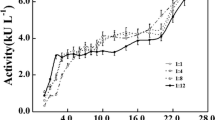Abstract
A simple and rapid strategy for molecular cloning using a gel-free and antibiotic selection method is described which allows for the complete elimination of DNA extraction by gel electrophoresis, and thus has several advantages over gel-based cloning methods, including: (i) a cloning efficiency that is approximately 10-times higher due to the prevention of ethidium bromide ultraviolet-induced DNA damage and contamination with ligase inhibitors; (ii) the amount of plasmid DNA required is approximately five times less; and (iii) the cloning time is several hours less. Once the target gene, such as mouse HtrA2 serine protease, was cloned into the pEGFP-N3 plasmid, the integrity of the kanamycin-resistant molecular clone encoding the GFP fusion protein was verified by immunoblot and immunofluorescence assays. In addition, the integrity of the ampicillin-resistant molecular clone was directly evaluated by analyzing the expression and affinity purification of the GST fusion protein and by measuring its enzymatic activity. Therefore, this method is suitable for the routine construction of a plasmid expressing the gene of interest, and the usefulness of this strategy can be demonstrated by monitoring the expression of the target gene in E. coli and mammalian cells.



Similar content being viewed by others
References
Aslanidis C, de Jong PJ (1990) Ligation-independent cloning of PCR products (LIC-PCR). Nucleic Acids Res 18:6069–6074
Ausubel FM, Brent R, Kingston RE, Moore DD, Seidman JG, Smith JA, Struhl K (1994) Current protocols in molecular biology, vol 1. John Wiley and Sons Inc., New York
Boussif O, Lezoualc’h F, Zanta MA, Mergny MD, Scherman D, Demeneix B, Behr JP (1995) A versatile vector for gene and oligonucleotide transfer into cells in culture and in vivo: polyethylenimine. Proc Natl Acad Sci USA 92:7297–7301
Brizzard BL, Chubet RG, Vizard DL (1994) Immunoaffinity purification of FLAG epitope-tagged bacterial alkaline phosphatase using a novel monoclonal antibody and peptide elution. Biotechniques 16:730–735
Chalfie M, Tu Y, Euskirchen G, Ward WW, Prasher DC (1994) Green fluorescent protein as a marker for gene expression. Science 263:802–805
Cost GJ, Cozzarelli NR (2007) Directed assembly of DNA molecules via simultaneous ligation and digestion. Biotechniques 84:86–89
Heim R, Cubitt AB, Tsien RY (1995) Improved green fluorescence. Science 373:663–664
Hegde R, Srinivasula SM, Zhang Z, Wassell R, Mukattash R, Cilenti L, DuBois G, Lazebnik Y, Zervos AS Fernandes-Alnemri T, Alnemri ES (2002) Identification of Omi/HtrA2 as a mitochondrial apoptotic serine protease that disrupts inhibitor of apoptosis protein-caspase interaction. J Biol Chem 277:432–438
Lehman LR (1974) DNA ligase: structure, mechanism, and function. Science 186:790–797
Marchuk D, Drumm M, Saulino A, Collins FS (1991) Construction of T-vectors, a rapid and general system for direct cloning of unmodified PCR products. Nucleic Acids Res 11:1154
Martins LM (2002) The serine protease Omi/HtrA2: a second mammalian protein with a Reaper-like function. Cell Death Differ 9:699–701
Park HJ, Choi JY, Seong YM, Han C, Yoon SJ, Kang S, Rhim H (2003) Antigenicity of the region encoded by exon8 of the human serine protease, HtrA2/Omi, is associated with its protein solubility. Biotechnol Lett 25:1597–1603
Sambrook J, Russell DW (2001). Molecular cloning: a laboratory manual, 3rd edn., vol 1. CSHL press, New York
Seong YM, Park HJ, Seong GH, Choi JY, Yoon SJ, Min BR, Kang S, Rhim H (2004a) N-terminal truncation circumvents proteolytic degradation of the human HtrA2/Omi serine protease in Escherichia coli: rapid purification of a proteolytically active HtrA2/Omi. Protein Expr Purif 33:200–208
Seong YM, Choi JY, Park HJ, Kim KJ, Ahn SG, Seong GH, Kim IK, Kang S, Rhim H (2004b) Autocatalytic processing of HtrA2/Omi is essential for induction of caspase dependent cell death through antagonizing XIAP. J Biol Chem 279:37588–37596
Suzuki Y, Imai Y, Nakayama H, Takahashi K, Takio K, Takahashi R (2001) A serine protease, HtrA2, is released from the mitochondria and interacts with XIAP, inducing cell death. Mol Cell 8:613–621
Suzuki Y, Takahashi-Niki K, Akagi T, Hashikawa T, Takahashi R (2004) Mitochondrial protease Omi/HtrA2 enhances caspase activation through multiple pathways. Cell Death Differ 11:208–216
Uren RT, Dewson G, Bonzon C, Lithgow T, Newmeyer DD, Kluck RM (2005) Mitochondrial release of pro apoptotic proteins: electrostatic interactions can hold cytochrome c but not Smac/DIABLO to mitochondrial membranes. J Biol Chem 280:2266–2274
Verhagen AM, Silke J, Ekert PG, Pakusch M, Kaufmann H, Connolly LM, Day CL, Tikoo A, Burke R, Wrobel C, Moritz RL, Simpson RJ, Vaux DL (2002) HtrA2 promotes cell death through its serine protease activity and its ability to antagonize inhibitor of apoptosis proteins. J Biol Chem 277:445–454
Acknowledgements
This work was supported by the Korea Research Foundation Grant funded by the Korean Government (MOEHRD, Basic Research Promotion Fund) (KRF-2006-311-C00123) and the Nuclear R&D Program from the Ministry of Science & Technology of Korea (M20709005447-07B0900-44710).
Author information
Authors and Affiliations
Corresponding author
Additional information
G-Y Kim, M-K Nam, and S-S Kim contributed equally to this work.
Electronic supplementary material
Below is the link to the electronic supplementary material.
Rights and permissions
About this article
Cite this article
Kim, GY., Nam, MK., Kim, SS. et al. A simple and rapid strategy for the molecular cloning and monitoring of mouse HtrA2 serine protease. Biotechnol Lett 30, 397–403 (2008). https://doi.org/10.1007/s10529-007-9556-6
Received:
Revised:
Accepted:
Published:
Issue Date:
DOI: https://doi.org/10.1007/s10529-007-9556-6




